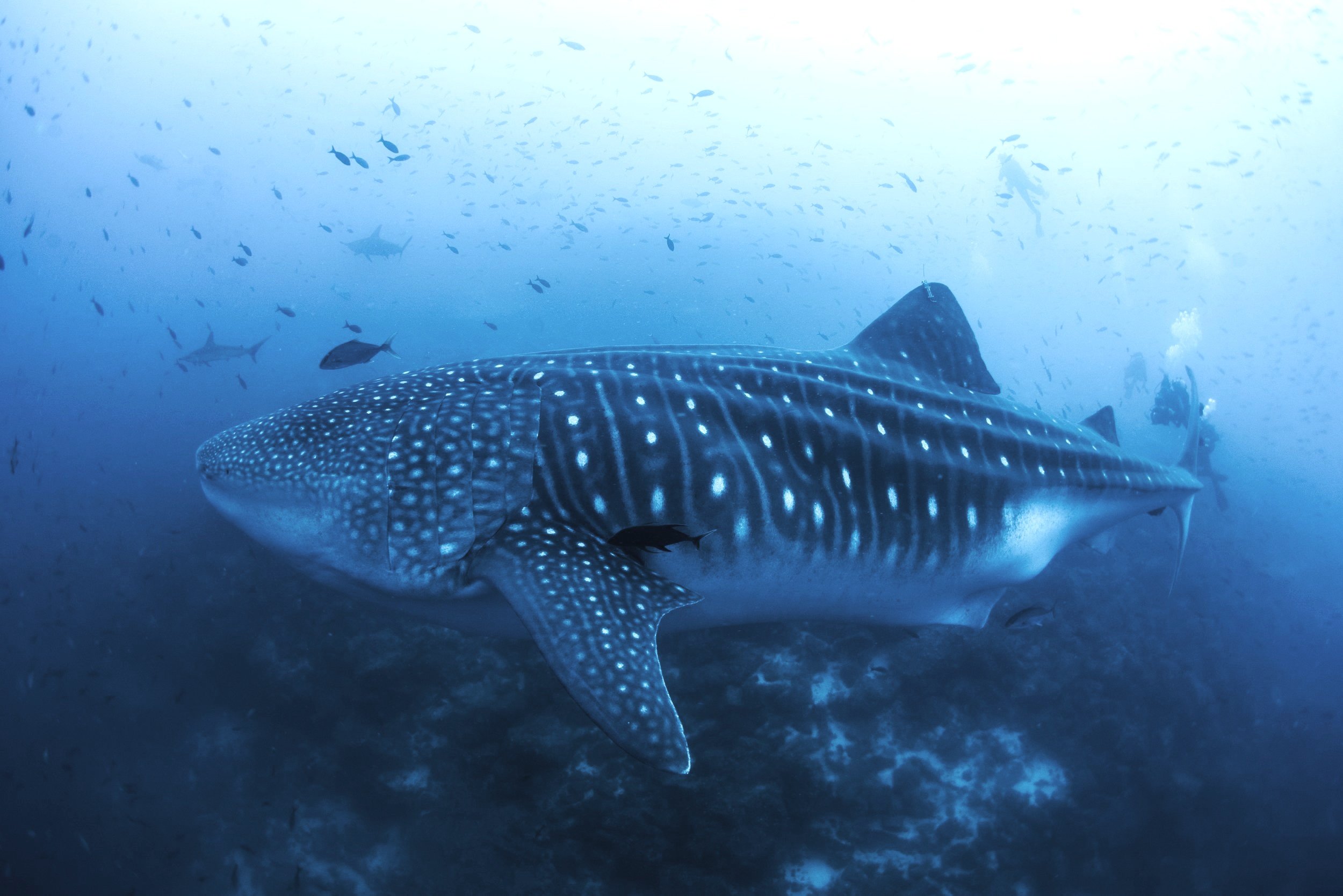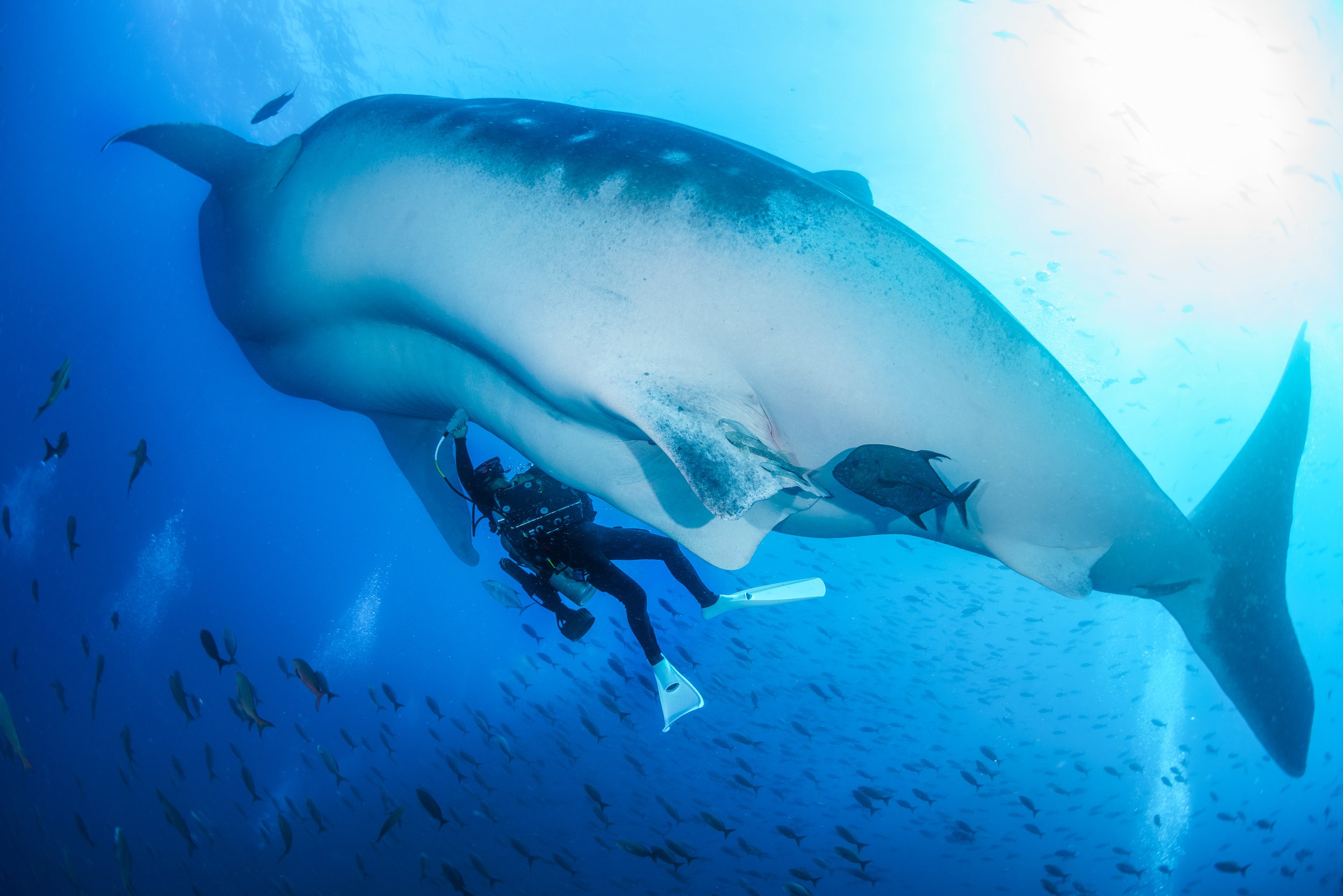BREAKING: The global operations behind China’s massive fishing fleets targeting the Galapagos Islands revealed
A major new investigative piece from the New York Times, How China Targets the Global Fishing Supply, highlights how this enormous international fishing fleet has spread across the world’s oceans. The Galapagos Islands are a prime fishing target due to the abundant ocean wildlife.
Satellite mapping from 2020–2021 shows how their fleets line the edges of international water surrounding the Galapagos, catching sharks and other marine life as they exit and enter protected waters.
Satellite imagery of fishing vessels (white dots) hugging the edges of protected waters off Ecuador. (Source: [CC BY-SA], Global Fishing Watch.)
There’s also evidence of recent illicit activity in the area: a vessel carrying 6,620 sharks – whose fins are a delicacy in China – was seized in 2017.
The NYT article also shows the journey of "Motherships" - gigantic refrigerated vessels that exist so smaller ships can unload their catch without ever needing to return to port, allowing them to fish continuously and making it easy to "underreport the catch and disguise its origins."
The Hai Feng 718 “Mothership”. Chinese National Fisheries Corporation
MMF was in the thick of it in 2020 when our collaborators at the Galapagos Whale Shark Project reported that an adult whale shark, “Hope”, tagged in 2019 and subsequently tracked via satellite, had suddenly been moving fast above the surface – the data indicated that she had been caught by one of the international fishing vessels.
Hope with her new tag
The public outcry over “Losing Hope” was a tipping point that caused major diplomatic tension. From the New York Times:
“The appearance of the Chinese fleet on the edge of the Galápagos in 2020 focused international attention on the industrial scale of China’s fishing fleet. Ecuador lodged a protest in Beijing. Its president at the time, Lenín Moreno, vowed on Twitter to defend the marine sanctuary, which he called “a seedbed of life for the entire planet.”
China has responded with offers of concessions. It announced moratoriums on fishing in certain areas, though critics noted that the restrictions apply to seasons when the fish are not as abundant. It vowed to cap the size of its deep-water fleet, though not to reduce it, and to trim the government subsidies it provides fishing companies, many still state-owned or controlled.”
Hope's final photograph, taken by Simon Pierce just after she was tagged.
Sofia Green, from the Galapagos Whale Shark Project, was tracking Hope:
"We were sharing her track on social media as she moved away from the Galapagos, and seemed to be looping back. Then, she suddenly stopped transmitting. We'll never know for sure what happened, but our data suggested she was caught by a fishing vessel.
When we reported her disappearance, it became international news, and China had to recall some of its fishing fleets. It was a huge deal. So we need to continue to expand the marine protected area around the Galapagos to give these animals a chance."
Hope's final track in red, overlayed with fishing vessels shown as as white dots.
Since then, the Galapagos Whale Shark Project team has pushed for significant expansion of marine protection, with the tracks of whale sharks and other threatened species leaving the national park encouraging Ecuador to enlarge the conservation area around the Galapagos Islands by nearly 50%, covering an additional 60,000 square kilometers (23,000 square miles). The order, which went into effect in 2022, bans commercial fishing in half of the area and limits fishing activity in the remainder.
Dive deeper:
Read the New York Times article
Learn more about the Galapagos Whale Shark Program
Sign up for Ocean Giants Magazine
Free access to back issues including Issue #4: “Whale Sharks of Galapagos” with Sofia Green
Watch our full interview and write up
Preview below:











